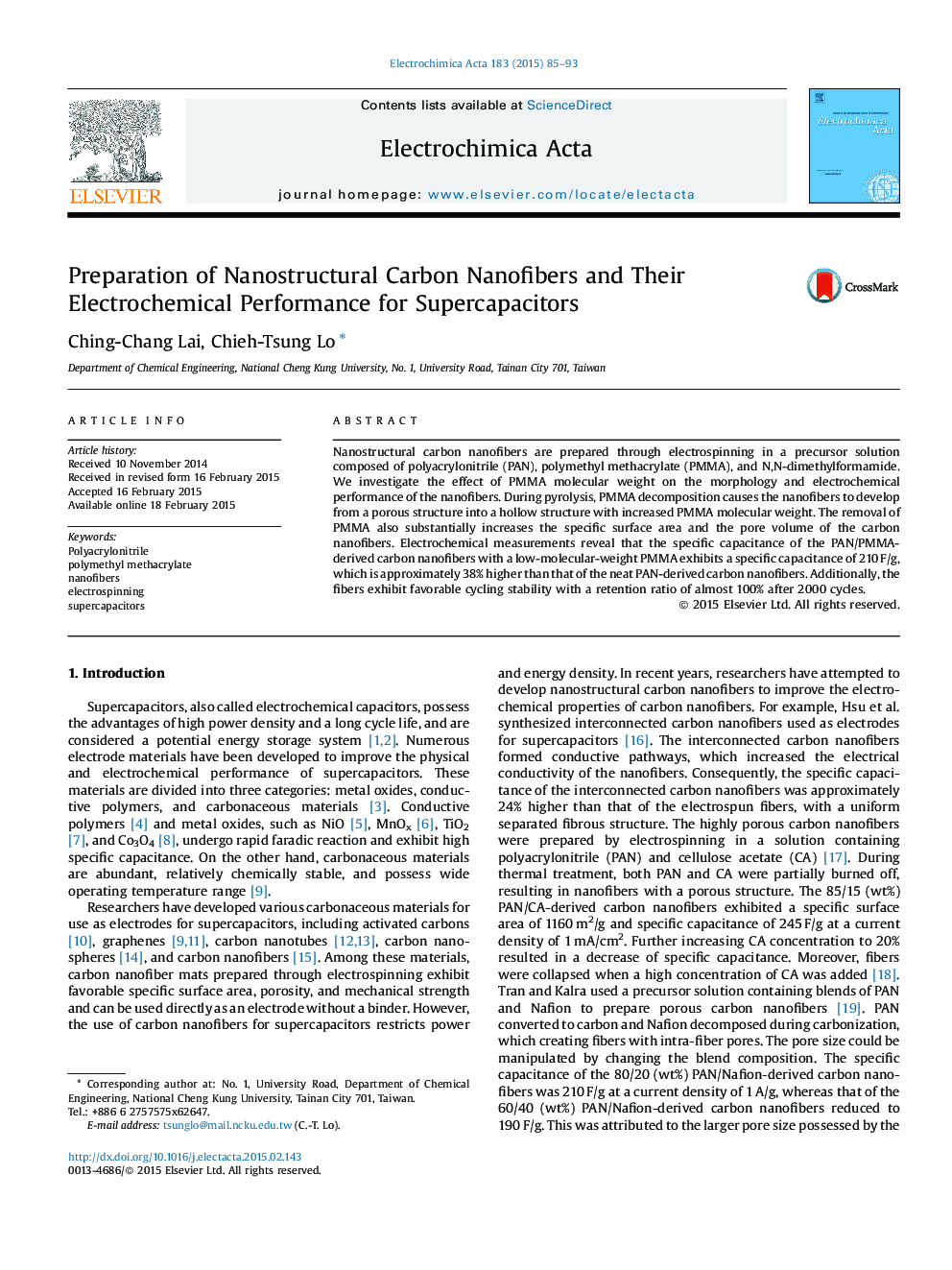| Article ID | Journal | Published Year | Pages | File Type |
|---|---|---|---|---|
| 183516 | Electrochimica Acta | 2015 | 9 Pages |
•Porous and hollow carbon nanofibers were prepared through electrospinning.•The nanostructural carbon fibers showed 38% enhancement on the specific capacitance.•The nanostructural fibers are promising to be used as electrodes for supercapacitors.
Nanostructural carbon nanofibers are prepared through electrospinning in a precursor solution composed of polyacrylonitrile (PAN), polymethyl methacrylate (PMMA), and N,N-dimethylformamide. We investigate the effect of PMMA molecular weight on the morphology and electrochemical performance of the nanofibers. During pyrolysis, PMMA decomposition causes the nanofibers to develop from a porous structure into a hollow structure with increased PMMA molecular weight. The removal of PMMA also substantially increases the specific surface area and the pore volume of the carbon nanofibers. Electrochemical measurements reveal that the specific capacitance of the PAN/PMMA-derived carbon nanofibers with a low-molecular-weight PMMA exhibits a specific capacitance of 210 F/g, which is approximately 38% higher than that of the neat PAN-derived carbon nanofibers. Additionally, the fibers exhibit favorable cycling stability with a retention ratio of almost 100% after 2000 cycles.
Graphical abstractFigure optionsDownload full-size imageDownload as PowerPoint slide
